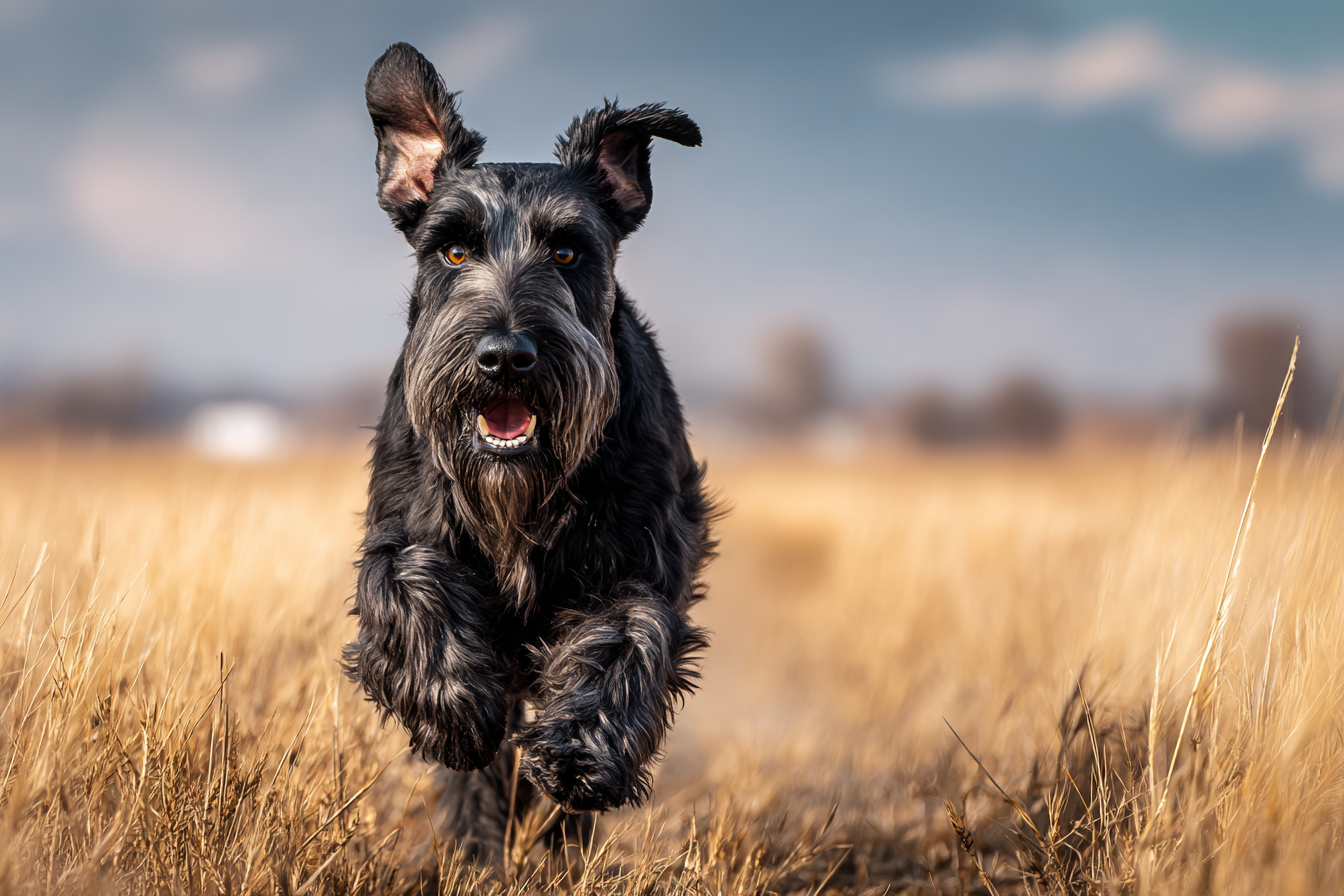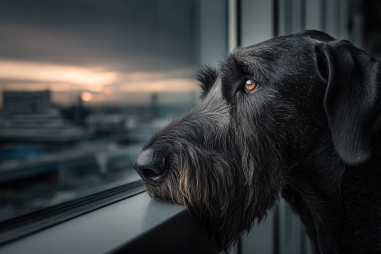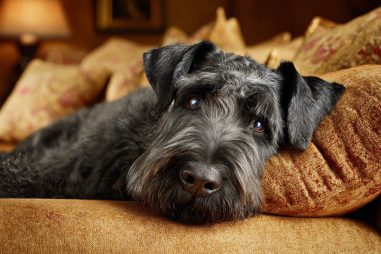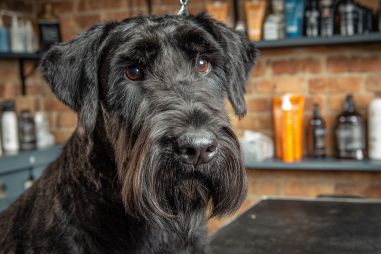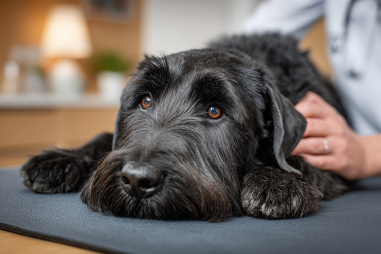Giant Schnauzers are remarkable dogs known for their intelligence, loyalty, and striking appearance. But one thing that truly sets them apart is their abundant energy and drive to stay active. Without sufficient exercise, these large and powerful dogs can become restless or develop behavioral issues. Meeting the exercise needs of a Giant Schnauzer is essential for maintaining their physical health and mental well-being. In this article, we will explore how to provide the right amount and type of activity, incorporate mental stimulation, and keep your dog safe and happy throughout all life stages.
Understanding the Energy Levels of Giant Schnauzers
Giant Schnauzers were originally bred as working dogs, tasked with herding livestock and guarding property. This heritage means they naturally possess high energy levels, endurance, and a strong work ethic. They thrive on having a job to do, whether that’s a physically demanding activity or a mentally challenging task. Typically, these dogs require much more exercise compared to many other breeds their size.
You can expect a Giant Schnauzer to have bursts of enthusiasm throughout the day and a persistent desire to engage with their environment. Without adequate stimulation, their pent-up energy may manifest as destructive chewing, excessive barking, or hyperactivity. Understanding these natural tendencies helps owners tailor exercise routines that keep their Giants happy and balanced.
Recommended Daily Exercise Types and Duration
Given their high energy, Giant Schnauzers generally need a minimum of 1.5 to 2 hours of exercise daily. This exercise should be a mix of physical and mental activities to fully satisfy their needs.
Effective types of physical exercise include:
- Long walks or jogs: These help maintain cardiovascular health and muscle tone. Many Giants enjoy running alongside a bike for increased intensity, provided they have learned to pace themselves.
- Off-leash play: Secure, fenced areas where your dog can sprint and explore freely are ideal. Fetch, frisbee, and tug games can expend energy and encourage bonding.
- Agility training: This sport offers an excellent workout combined with cognitive challenges, enhancing agility, coordination, and obedience.
- Swimming: If your dog enjoys water, swimming is a superb low-impact exercise option.
Breaking the total exercise into two or more sessions per day is preferred, as it suits the Giant Schnauzer’s work-oriented nature and helps avoid overexertion. Morning and evening exercise routines provide consistent structure, reducing unwanted behaviors caused by boredom or excess energy.
Mental Stimulation Activities
Physical exercise alone isn’t enough for a Giant Schnauzer. Being exceptionally intelligent, these dogs require mental stimulation to stay satisfied. Engaging their minds builds confidence, sharpens problem-solving skills, and prevents feelings of boredom.
Popular mental activities to incorporate include:
- Obedience and trick training: Learning new commands or refining existing skills provides mental exercise and strengthens your communication.
- Interactive toys and puzzle feeders: These toys challenge your dog to solve problems to access treats or food, keeping them entertained for substantial periods.
- Scent work and nose games: Hiding treats, scent trails, or puzzle scent boxes stimulate natural tracking instincts.
- Structured play sessions: Games such as hide-and-seek, where your dog must find you or a hidden item, combine physical and cognitive development.
Providing a variety of challenging activities not only tires your dog out but also fosters a happy, confident temperament.
Exercise Safety Tips
While exercise is vital, it’s equally important to practice safety to protect your Giant Schnauzer’s health. Keep these tips in mind for safe activity:
- Warm up gradually: Before intense activity, take your dog on a slow walk to prepare muscles and joints.
- Stay hydrated: Bring fresh water on outdoor adventures and encourage regular drinking.
- Avoid extreme weather: Giant Schnauzers have thick coats and can overheat easily in hot weather. Exercise early in the morning or later in the evening during summer months. In winter, limit exposure to frigid temperatures.
- Use proper equipment: A sturdy leash, harness, or secure fencing is essential to control your dog and prevent escapes or injuries.
- Watch for exhaustion or pain: Know your dog’s limits and watch for signs of fatigue, limping, or discomfort.
- Consult your vet: Before starting any new exercise regimen, especially for puppies, seniors, or dogs with health conditions, seek veterinary advice.
Adapting Exercise Routines for Age and Health
A Giant Schnauzer’s exercise needs will change throughout its life. Tailoring activity to their age, fitness, and health status ensures they remain comfortable and safe.
Puppies and Adolescents
Young giants are bursting with energy but have developing bones and joints. Keep exercise low-impact and avoid repetitive high-impact activities like jumping until their growth plates close (around 12-18 months). Shorter, frequent play sessions, odor games, gentle walks, and training classes help build a solid foundation while preventing injuries.
Adult Dogs
At full maturity, your Giant Schnauzer can handle more vigorous, extended exercise sessions. Two daily workouts featuring walks, off-leash play, and training challenges are ideal. Pay attention to your dog’s tolerance and gradually increase intensity and duration.
Seniors and Dogs with Health Issues
Older dogs or those suffering from arthritis, obesity, or heart problems require gentler exercise with shorter duration but consistent frequency. Swimming and slow leash walks are excellent low-impact options. Adjust activities based on veterinary recommendations and closely monitor their comfort during activity.
Fun Activities to Bond with Your Giant Schnauzer
Exercise is not just about wearing your dog out—it’s an opportunity to strengthen your relationship and share joy. Here are some enjoyable ways to bond with your Giant Schnauzer:
- Structured playtime: Games like fetch or tug-of-war build trust and teach impulse control when played with clear rules.
- Training classes: Joining obedience or agility groups enhances both your and your dog’s skills while socializing with others.
- Hiking adventures: Exploring natural trails provides variety and satisfies your dog’s curiosity and scent-driven instincts.
- Canine sports: Participate in dog sports such as schutzhund, tracking, or flyball tailored to your dog’s abilities.
- Massage and relaxation: After exercise, spend quiet time grooming and massaging your dog to reinforce your bond and soothe muscles.
These shared activities enrich both your lives and make exercise a joyful daily habit instead of a chore.
Caring for Your Energetic Giant
Meeting the exercise needs of a Giant Schnauzer demands time, dedication, and understanding of this breed’s dynamic personality and physical demands. By combining daily physical activity with mental challenges, adapting routines to your dog’s life stage, and prioritizing safety, you’ll help your Giant Schnauzer flourish as a balanced, joyful, and well-behaved companion. Enjoying fun and interactive exercises together deepens your relationship and creates a fulfilling lifestyle for you and your esteemed giant.

